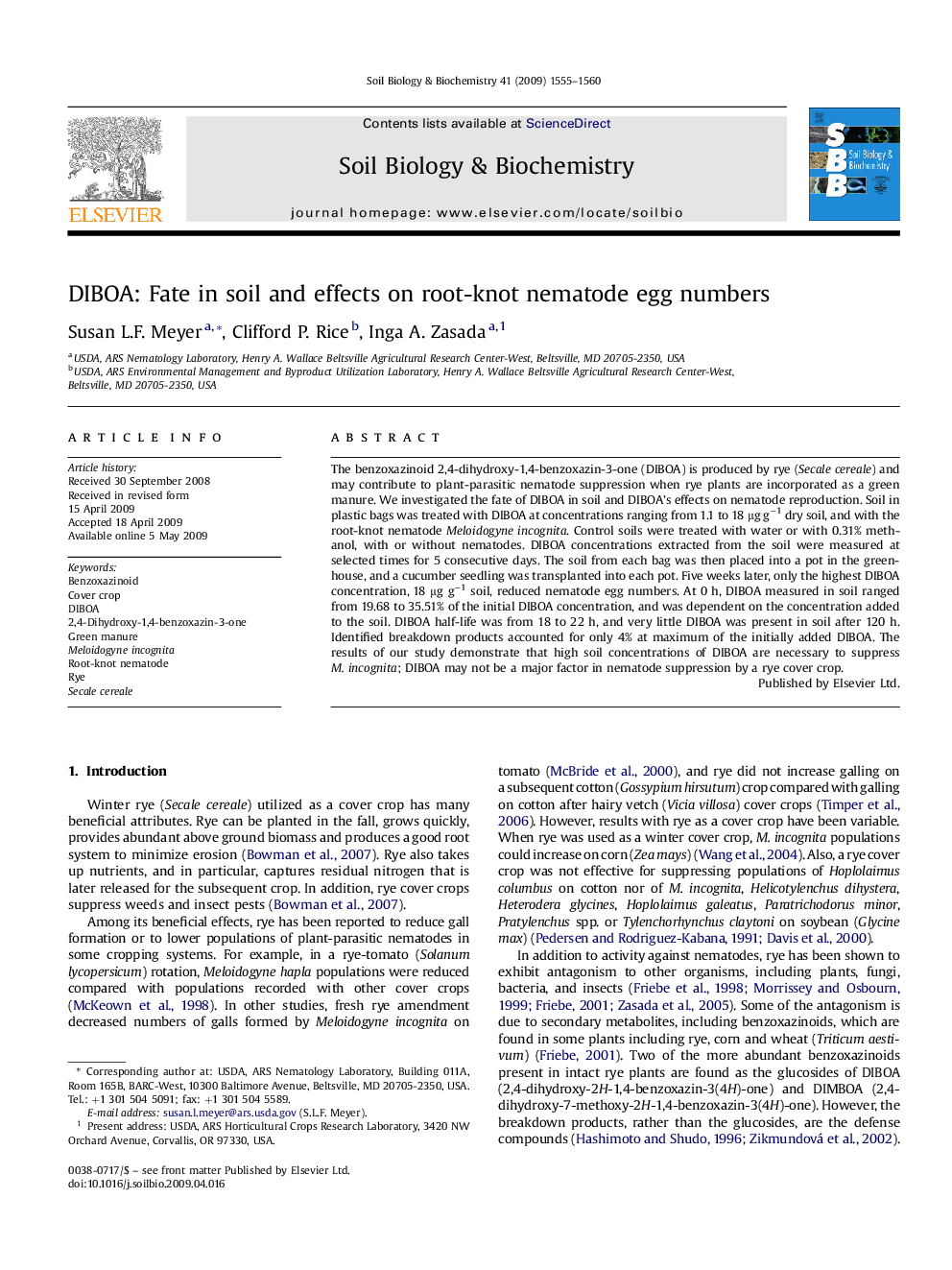| Article ID | Journal | Published Year | Pages | File Type |
|---|---|---|---|---|
| 2025221 | Soil Biology and Biochemistry | 2009 | 6 Pages |
The benzoxazinoid 2,4-dihydroxy-1,4-benzoxazin-3-one (DIBOA) is produced by rye (Secale cereale) and may contribute to plant-parasitic nematode suppression when rye plants are incorporated as a green manure. We investigated the fate of DIBOA in soil and DIBOA's effects on nematode reproduction. Soil in plastic bags was treated with DIBOA at concentrations ranging from 1.1 to 18 μg g−1 dry soil, and with the root-knot nematode Meloidogyne incognita. Control soils were treated with water or with 0.31% methanol, with or without nematodes. DIBOA concentrations extracted from the soil were measured at selected times for 5 consecutive days. The soil from each bag was then placed into a pot in the greenhouse, and a cucumber seedling was transplanted into each pot. Five weeks later, only the highest DIBOA concentration, 18 μg g−1 soil, reduced nematode egg numbers. At 0 h, DIBOA measured in soil ranged from 19.68 to 35.51% of the initial DIBOA concentration, and was dependent on the concentration added to the soil. DIBOA half-life was from 18 to 22 h, and very little DIBOA was present in soil after 120 h. Identified breakdown products accounted for only 4% at maximum of the initially added DIBOA. The results of our study demonstrate that high soil concentrations of DIBOA are necessary to suppress M. incognita; DIBOA may not be a major factor in nematode suppression by a rye cover crop.
